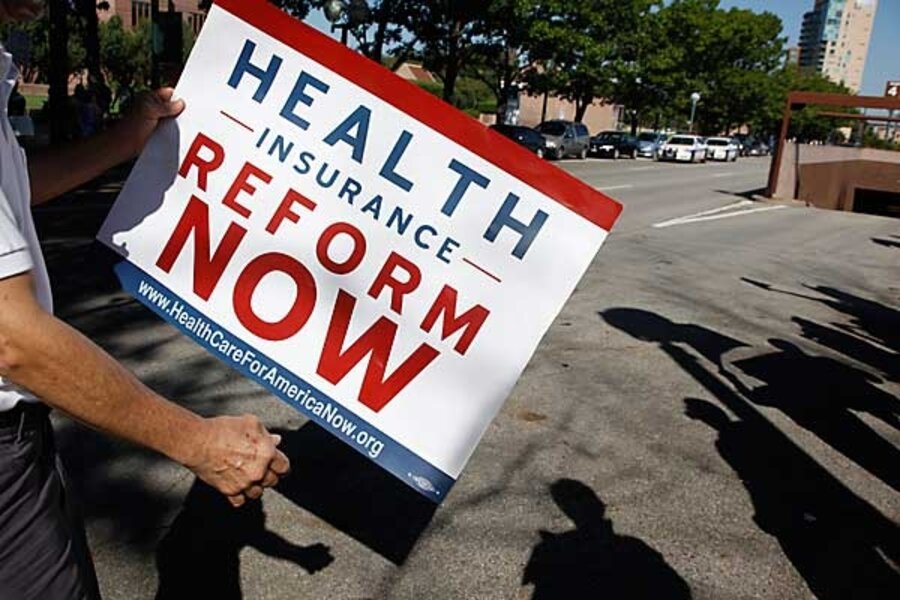The ABCs of healthcare: a glossary of the key plans
The healthcare debate revolves around three different forms of healthcare: a single-payer option, a so-called “public option,” and, most recently, healthcare cooperatives. At times, interest groups have sought to create confusion about what is actually in play or what each form of healthcare would or wouldn't do.
Here is a primer:
Healthcare cooperatives
This option has become more prominent in recent days, because it is seen as perhaps the only reform plan that could win support from Republicans as well as Democrats.
In healthcare cooperatives, payers would come together to run their own insurance in a nonprofit system.
To begin, these cooperatives would be initially funded by start-up money from the government. This option's primary backer, Sen. Kent Conrad (D) of North Dakota, said about $6 billion would be needed to establish nonprofit cooperative networks at the national, state, and local levels.
Proponents say healthcare cooperatives would create competition for private insurers – potentially driving costs down – without expanding the size and scope of the federal government significantly. There are already existing healthcare models in Washington State, California, and Minnesota, as well as other successful cooperative models in other industries, such as electricity and agriculture.
But the fact that cooperative systems are already legal and operational is a strike against them, critics say. They occupy only a tiny sliver of the existing healthcare market and are best as smaller organizations. As they grow, cooperatives tend to become “unwieldy,” says William Dow, chair of the health services and policy analysis group at the University of California in Berkeley. “It’s a hard model to scale up to any large size, so that it would be large enough to cover a nontrivial portion of the community.”
The public option
Typically, the public option means that individuals would be able to purchase insurance from a government-run, Medicare-like insurance scheme, says Dr. Dow.
A potential benefit of this system is that the government could use its substantial size and clout to force down reimbursement rates, which would in turn decrease premiums and result in increased competition with private providers. Ultimately, it could decrease premiums for those not on the government plan as well, according to this viewpoint.
However, if by reducing premiums, the public option drives other private insurers out of business, this could ultimately result in a lower quality of care, Dow notes. “The danger is if the public option was initially so attractive that many people moved in and some insurance companies went out of business and then, the public option started to become poorly run. It could lead to the type of queuing and lower quality over time that many conservatives fear.”
Alternatively, if the public option did not receive special subsidies or negotiate lower reimbursement rates, it could be just another plan that would do little to shake up competition with existing private insurers.
Single-payer system
A single-payer system could take one of two forms.
Either a single, government-run healthcare insurer could enter into contracts with private providers, or the government could administer healthcare itself.
Neither appears likely. Though many Democrats on the far left continue to stump for a single-payer system, President Obama has said that switching to such a system would be too traumatic for the American healthcare system.
It’s “not at the top of the agenda of any of the powers that be,” says Dow.





